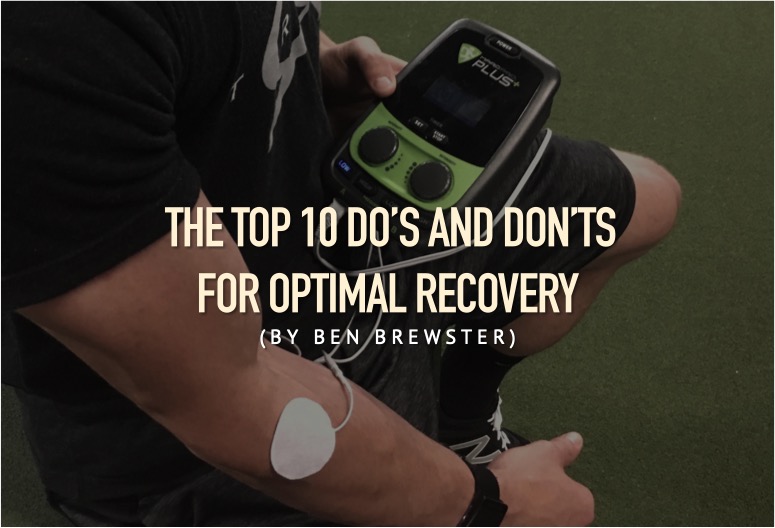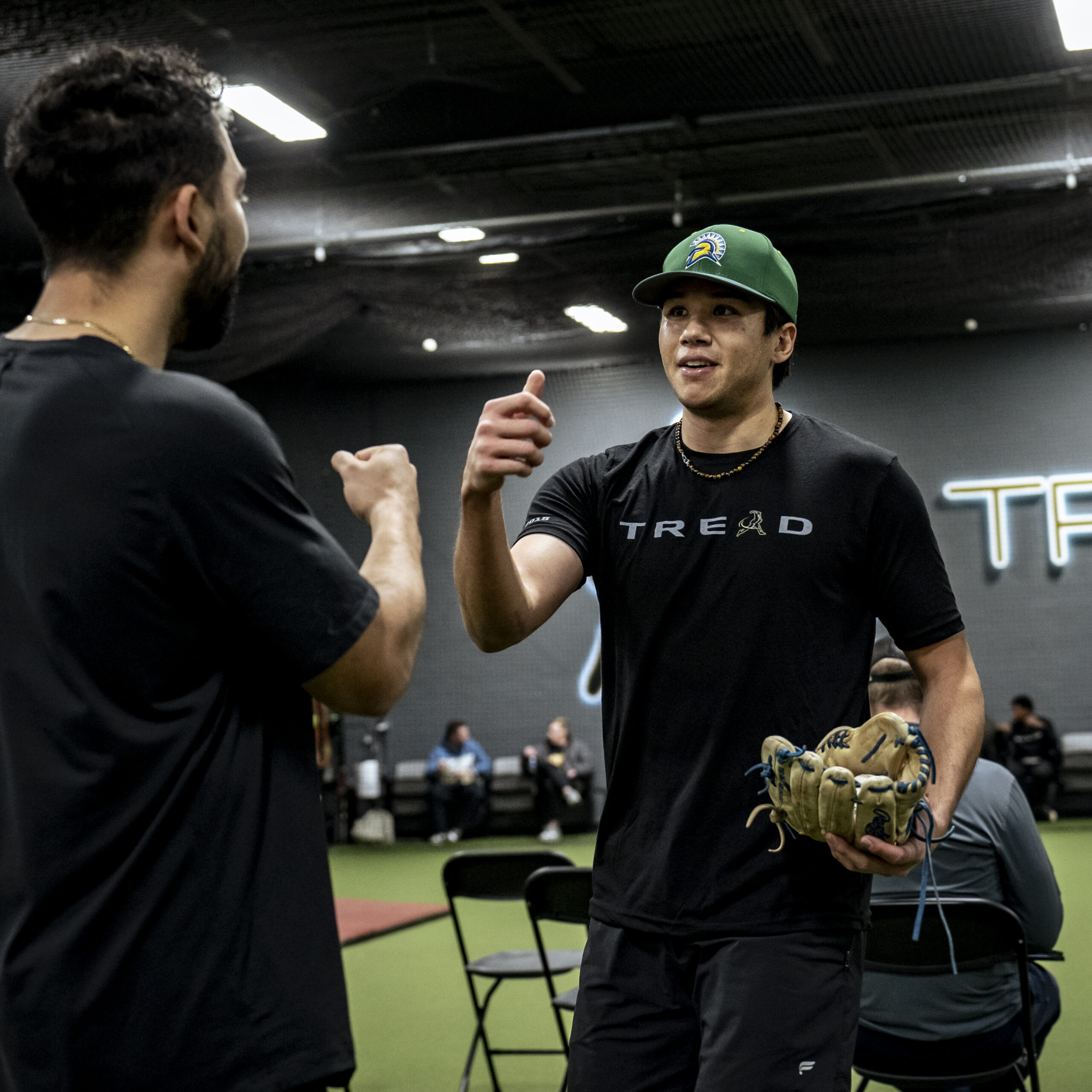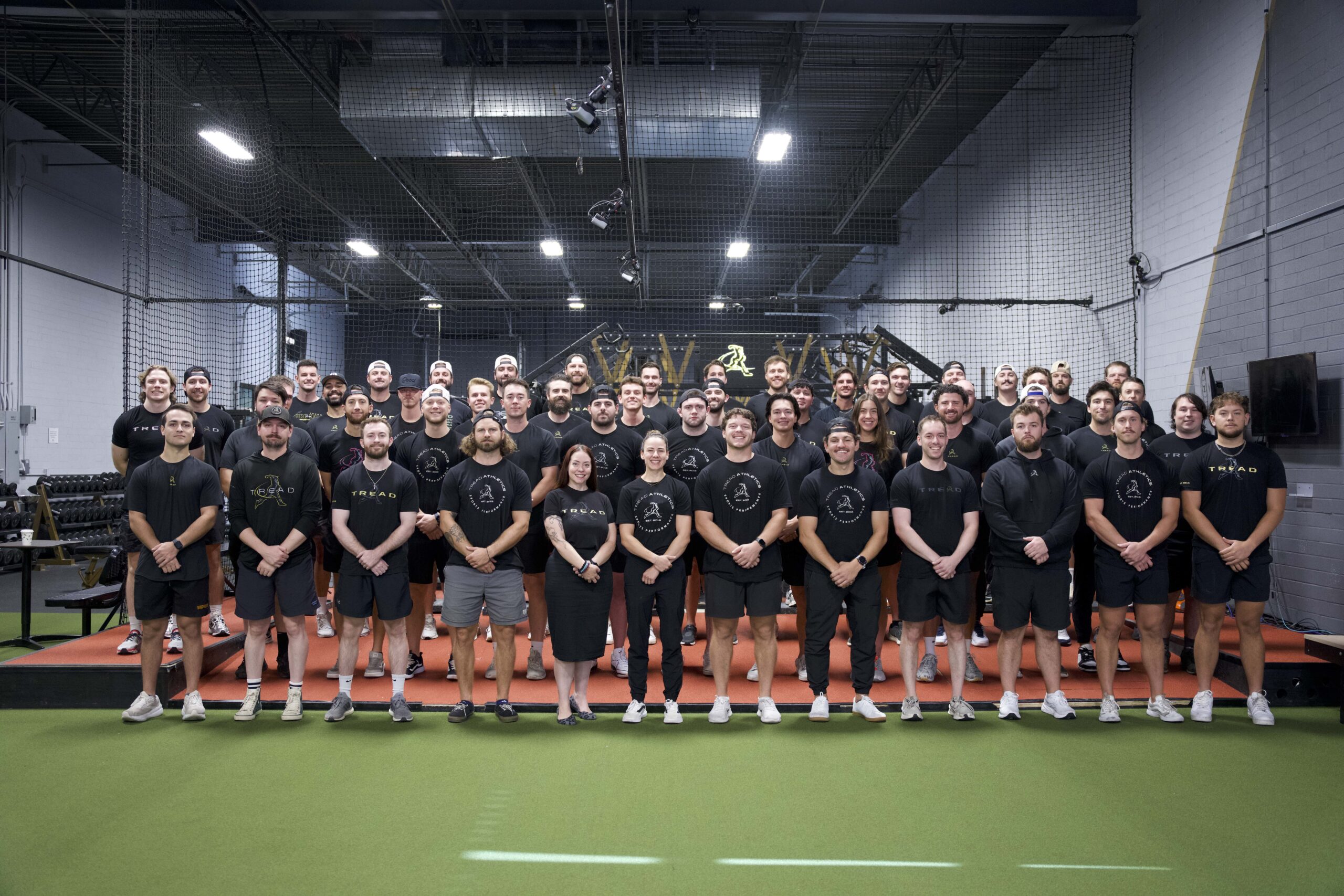by Ben Brewster
The initial spike in workload, in (often) underprepared athletes, is largely to blame for this fact.
While muscle, connective tissue and nervous system recovery take time, this rate of recovery can be improved to a point.
That’s what this post is all about – reviewing what works, and what doesn’t, when it comes to your recovery.
These factors are not all equally weighted – some of them may play a significant role, while others will have smaller impact on your ability to recovery quickly. Furthermore, this article is about the basics – I considered writing about the dozen fancy gadgets and gizmos that can benefit recovery – but while many of these can help, I ultimately decided to keep this as practical and widely applicable as possible. I’ll mention some of the additional modalities you can look further into at the end of the article. If it helps (or if it even has a chance of helping), I’ve likely tried it. Though much of this is based on anecdotal experience in myself and the athletes Tread has worked with as a company, I will make sure to include scientific references and detail mechanisms of action where possible.
Not all of this is groundbreaking, but I’ve found that sometimes the tried-and-true strategies get lost in the shuffle of whatever is newest and fanciest.
The Heavy Hitters
The following are the heavy hitters – the modalities that are tried and true. For general day-to-day recovery, focus most of your recovery attention to these things. Additional gadgets and modalities like the Marc Pro, Voodoo Floss, Microcurrent, Cold Laser, Shockwave, Normatec, etc. should make up significantly less of your focus – and only once these three basics are in order.
#1: Active Recovery
Any discussion of recovery would be incomplete without mentioning the obvious – active recovery involves light to moderate activity to drive blood into the muscles and connective tissues. This is best performed with exercises that have low impact, but create lots of blood flow to the area – the point isn’t to do more damage to the tissues, but rather to stimulate the natural healing process.
Anecdotally, this is why generations of pitchers have claimed that distance runs or poles the day after a start seem to help reduce soreness and expedite recovery. Though the bro-science explanation of lactic acid clearance was wrong, the point stands – active recovery works. Despite this, I would still argue that there are better ways to get an active recovery effect, that don’t have the potential to send the wrong training signal (aerobic vs. anaerobic energy systems).
Reducing impact and eccentric stress is one of the more important variables to consider when it comes to active recovery (and more generally, with conditioning, if the purpose is to minimally interfere with recovery).
Do you remember how sore your hamstrings got after that one time you ran a dozen hard 100 yard sprints?
Yeah, me too.

What about after heavy sled pushes, bike sprints or stair sprints?
Yeah, me either. Maybe the feeling of “heavy” legs the next day if I overdid it, but never the type of soreness from true sprinting.
Why is this?
The difference in the latter options is they are concentric-only or “positive only” conditioning options, unlike flat ground sprinting (or in an extreme case, downhill sprinting).
It’s the deceleration or the eccentric phase in a movement that creates the most muscle damage – a finding that has been consistently observed in the scientific literature.
Have you ever done slow eccentric squats and felt your quads, glutes and hamstrings the next day? Yeah. You know what I’m talking about.
Here are a couple sled sprint variations that we use with our remote athletes:
If most coaches understood just this one fact and looked at conditioning (at least for pitchers) as active recovery, you could almost do some sort of “conditioning” on a daily basis. Instead, it has become the norm to do daily sprint work in most college and pro organizations – a workload that is unsustainable for athletes who follow the typical instructions and go hard on all reps.
Eccentric stress adds up. Concentric stress does too, but much slower. As an extreme counter example, I’ve actually done 10 minute bike intervals daily, 3 times per day, with positive recovery effects over time. Daily sprints for 10 minutes, on the other hand, always led to shin splints, heavy legs and decreased explosiveness after a couple weeks.
Most coaches should look at conditioning (at least for pitchers, and especially in-season) as active recovery, rather than conditioning or speed-work.
Rather than yelling at athletes for half-assing daily running (something that is a necessity to survive most irresponsibly designed running regimens), how about understanding that sometimes the goal should actually be to stay at a low to moderate intensity to help their muscles recover?
There’s a novel thought.
Mobility circuits can also serve a role in active recovery. These are essentially extended dynamic warm-ups, done up-tempo – as the logic goes, why not be working on something productive while also increasing blood flow?
This is another great idea that you can play around with, but not all of the best mobility drills are up-tempo, blood flow inducing movements, so this shouldn’t make up the entirety of the mobility work prescribed to an athlete.
Sample active recovery:
8-12 minutes of moderate intervals @50-75% intensity (15-30 sec sprint duration, 1 sprint per minute).
Options: bike, sled, stairs, “deadmill” sprints (below)
You’re doing it right if you have a light sweat, a decent burn through your quads and you don’t have sore or “dead” legs the next day!
#2: Sleep
I don’t need to rehash this point too much, but suffice it to say that lack of sleep increases your chance of injury and decreases recovery and performance, while sleep extension improves recovery and performance across a wide variety of studies and metrics.
We all intuitively know this, so I won’t bore you to death talking about how sleep is when your natural growth hormone is released. I certainly won’t mention that reaction time, accuracy, sprint times, motivation, focus, memory and injury susceptibility have all been positively linked to improved sleep quality. And I definitely wouldn’t dare bring up the fact that sleep hygiene – which includes sleep supporting habits like a bedtime routine, using earplugs/sleeping masks, hanging blackout curtains and avoiding blue light/screens an hour before bed, is the most common recommendation for improving sleep quality.
No, I won’t do that. So let’s agree that sleep is one of those self-evident aspects of recovery that isn’t sexy, and is hard to take seriously in the face of so many screens and distractions.
But that doesn’t mean you shouldn’t take it seriously.
“Sleep is one of those self-evident aspects of recovery that isn’t sexy, and is hard to take seriously in the face of so many distractions – but that doesn’t mean you shouldn’t.”
Note: if you’re interested in the recovery device that revolutionized the way I looked at and measured my sleep, check out my article on the Whoop Strap. A game-changing recovery and sleep monitoring device, they have recently switched over in 2019 from charging $400-500 for the strap to instead having a much more accessible monthly fee / subscription service so you can try it and see if you like it without the large up front investment.

#3: Nutrition
“If you’re worrying about the brand of creatine you use or how many minutes you got on the Marc Pro device, but you’re still eating pop tarts and cinnamon toast crunch for breakfast, you’re a special kind of stupid.”
~Anonymous
I’m not sure who came up with this quote (I would never say such insensitive things), but it found its way onto the page so we might as well discuss it.
Nutrition is a prerequisite for optimal recovery.
You spend hours training (and thus tearing down) your muscles in the weight room and on the field. Do you think think those fibers are just going to magically repair themselves bigger and stronger without you supplying the raw building blocks to do so?
Good luck with that hypothesis.
Most people spend so much effort focusing on the wrong nutritional variables, not understanding the order of priority when it comes to nutrition…and it’s easy to see why.
We are bombarded by supplement companies trying to convince us that their formulation is the next big thing (hint: most all of them aren’t. You can look up the scientific research on any supplement ingredient here). Meanwhile, people still believe in myths like eating multiple small meals per day will boost your metabolism or carbs ingested after 6pm will immediately turn into fat.
You’re confused – I know I was. So let’s revisit the basics.
Calories
Calories are energy – if you don’t have an equal or positive energy balance, your body is going to have to work a bit harder to recover. So don’t expect to be recovering optimally if you’re losing weight! This is especially relevant in-season, when most athletes forget to maintain the nutritional habits that they kept up with during the off-season.
Luckily, this is an easy fix. Track your calories (even when your goal is just to maintain weight) and make sure your bodyweight is staying steady. Bump calories up by 200 after 2 weeks if you’re losing weight.

Protein
Protein (broken down into what are called amino acids) makes up the building blocks of muscle tissue. It’s been known for decades just how important adequate protein intake is for muscle growth and repair – and its importance increases even more in the absence of adequate calories.
Look to consume approximately 1 gram of protein per pound of bodyweight. Slightly less is probably okay, and more won’t hurt you, but this is a good rule of thumb to cover your bases.
I’m 205-210 lbs, so I’ll shoot for around 210 grams of protein per day. And don’t worry – if you eat more than 30 grams of protein in a sitting it isn’t wasted. Protein beyond what is used to max out protein synthesis (and minimize protein degradation), will still be used for energy through a process that converts it to glucose (called gluconeogenesis). You don’t have to worry about getting fat from a high protein intake – provided your overall calories are in order.
“Consume approximately 1 gram of protein per pound of bodyweight…this will max out protein synthesis and minimize protein degradation…provided your overall calories are in order.”
While the other macros (carbs and fat) matter, micronutrients matter, hydration and meal timing matters, and supplements can have a minor impact, they simply aren’t as relevant until calories and protein are in place.
So let’s get that right first.
For more information on the rest of the nutritional hierarchy, check out Building the 95 MPH Body.
Surprise Bonus: G Flux
G Flux, to my knowledge, was a term first coined by Dr. John Berardi. It describes what we intuitively know: not all calorie balances are created equal.
Let’s take a maintenance example here:
Athlete A consumes 2500 calories per day, and burns 2500 calories per day. He is mostly sedentary besides a few weight training and throwing sessions per week. His net calorie balance is zero – meaning he will maintain his weight.
Athlete B consumes 3500 calories per day, and burns 3500 calories per day. He is very active throughout the day, incorporates active recovery, and other strategies at his disposal. His net calorie balance is also zero, and he will maintain his weight as well.
But, counter to what many textbooks would have you believe, these two scenarios aren’t equivalent.
Athlete B has a higher total energy turnover, which comes with it a host of benefits as outlined by Dr. Berardi:
- Increased metabolic rate
- More rapid adaptations to stress
- Improved health and recovery
- Improved nutrient partitioning
- Increased tissue remodeling
I’ll be honest, when I read this article a while back, a giant lightbulb turned on in my head. This is something we intuitively know when we think about it. Cutting body fat at the highest intake possible is one example of this – you can lose weight at the same rate if your daily expenditure is 2500 calories and you eat 2000 calories, or if your daily expenditure is 3500 and you eat 3000 – but the difference in energy, body composition, recovery and everything else listed here isn’t even close.
My experience with G Flux:
I recovered quickly in college – throwing 6 days per week and taking a Monday off, and my arm felt like I’d taken a week off. I was burning upwards of 4,000 calories a day, and it took me upwards of 5,000 calories to budge the scale in a positive direction. Walking a couple miles around campus to class, morning weights, and 3-5 hour practices quickly racked up my “G-Flux,” giving me a very high total energy turnover. Not only this, but I’d hit the bed like a rock every night, easily sleeping through the night.
Contrast this to my first off-season as a pro, and I was largely sedentary outside of my 90 minutes in the gym 4 days per week. My maintenance intake dropped to around 3,000 calories on training days, and even less on rest days.
When I was sore, it would linger. I felt more restless, and my sleep was never as consistent.
It’s a fine balance, and you definitely don’t want to over train in the name of increasing energy turnover, but I make sure to do some sort of active recovery every day (including walks and sauna sessions on rest days – more on this later) in order to keep the energy turnover up without further breaking down the tissues.
G Flux isn’t a free pass to over train, but the point is to live an active lifestyle and move intelligently (and in a way that doesn’t detract from your recovery) beyond the confines of your weight training and throwing sessions. For in-season athletes, this is largely a moot point because you’re likely going to be extremely active by default, but it was worth reviewing this concept nonetheless.
Assistance Recovery Strategies
These likely play a small role in recovery. For general recovery they are the equivalent of supplements in your diet – they probably account for about 10% of the recovery benefit you hope to achieve.
Disclaimer – I have no way to put these exact numbers on passive modalities – just understand my point and don’t get your hopes up if you don’t suddenly triple your recovery rate using these tools. In my book, any incremental benefit I can get is probably worth it, and I have seen benefits with all of these. I originally had a half dozen additional modalities in this list, but many of them were expensive, impractical and require a trained therapist to administer. With that being said, these are some of the most accessible options of the bunch.
#4: Sauna
I first learned about the benefits of Sauna for recovery from Dr. Rhonda Patrick, who has written about the growing body of research on heat acclimation and athletic performance.
I’ll link to her research summary here, but these are some of the notable effects of heat acclimation:
Reduction in protein degradation
Sauna use induces a beneficial stress response in the body, causing the body to release what are called heat shock proteins. These proteins appear to be responsible for the increase in net protein synthesis by inhibiting muscle degradation or breakdown.
Net protein synthesis is the balance between anabolism (muscle building) and catabolism or degradation (muscle breakdown). By reducing the second part of the equation, you increase the potential for muscle growth and recovery from training, as well as the potential for reducing muscle atrophy if you suffer an injury and can’t train.
One study in rats looked at muscle atrophy following immobilization, and found that heat exposure decreased muscle loss by up to 32%.
Improved endurance
Sauna use improves nutrient delivery to muscles, and causes a lower working heart rate and core body temperature. One study found that the time it took to run to exhaustion increased by 32% following sauna exposure, and that this was accompanied by an increase in blood plasma volume and red blood cell count.
Short term boost in growth hormone
Sauna use may boosts growth hormone 2 to 5 fold in the several hour period following exposure. Growth hormone plays a role in muscle repair by preventing muscle degradation. These studies looked at protocols ranging from 30-40 total minutes of exposure and temperatures ranging from 176 to 212 degrees Fahrenheit.
My thoughts
- During periods of injury, this seems like a valuable tool to add. If you can help stave off atrophy by sitting in a hot room, that seems like a no brainer.
- Though this is purely anecdotal, it seems to help my sleep quality, as well as feeling more relaxed afterwards (winding down from a sympathetic training state to a relaxed, parasympathetic state post training).
- This goes without saying, but don’t do a heavy sauna session before a strenuous training session or a game. You’re going to feel relaxed and possibly fatigued for an hour or two afterwards. Even though no real muscle fatigue has taken place (and it’s a beneficial stress response), it’s still a stressful stimulus to your body.
- This also goes without saying, but hydrate. I add salt and electrolyte packets to a large water bottle and sip it throughout the session.
- These studies are all in hot, dry saunas, using >176 degrees and typically 20-40 minutes. Dr. Patrick suggests pushing a bit past when it becomes uncomfortable. Infrared saunas may have similar effects, but I wouldn’t personally extrapolate the benefits to include them, as they typically operate in the 130-160 degree range and may or may not create the same response.
- Not addressed in the research is the potential for creating positive mobility adaptations. In this warmed state, it’s a perfect time to do mobility work when your tissues are at their most pliable.
- I personally use the sauna as a time to answer emails or texts on my phone, listen to podcasts or read e-books. It builds in some relaxation and down time to the day. I’ll typically use it for about 30-40 minutes, 3-4 times per week (this is how long it takes for me to get to that uncomfortable point). If I had a hotter sauna, I’d stay less time, and if I had a sauna room (which is more common in Europe), I imagine it would be even more time efficient to put a stationary bike in there and pair up active recovery, mobility work and heat exposure simultaneously.
#5: Muscle Stimulation (Marc Pro vs. TENS)
I’ve talked about the Marc Pro in the past here. I like it and many of our athletes do as well. While it’s far from a miracle tool, it’s probably worth trying if you have the resources to do so.
Here’s the main difference between the Marc Pro and standard TENS or muscle stim units: frequency, i.e. how many contractions per second. Cheap TENS units “drown out” pain signaling sensory nerves, making you temporarily feel better during (and possibly after) the treatment with a very high frequency of contraction. In my experience, not only do they not help recovery but they tend to be somewhat fatiguing due to the massive number of contractions stimulated.
“Cheap TENS units “drown out” pain signaling sensory nerves, making you temporarily feel better…but they tend to be fatiguing.”
The Marc Pro doesn’t aim to overpower pain signaling nerves – the idea is to stimulate passive muscle contractions at a much lower frequency – one that doesn’t induce fatigue, and by doing so stimulate blood flow and fluid exchange in the treated area.

If you’re not following, here’s a simple way of thinking about it: TENS units are a strong numbing buzz, while the Marc Pro is a rhythmic, massage-like pulsing contraction.
Warning: the Marc pro Plus also has a high frequency setting – if you have one, don’t use this setting for general recovery purposes.
Worth trying if you can get your hands on one and the steep pricetag doesn’t discourage you.
You can find my full review here.
#6: Active Release / Self Myofascial Release
Active Release Therapy, (ART) or manual therapy in general, isn’t as much for general recovery as it is for targeting specific problematic movement restrictions to allow you to move unrestricted and/or pain free.
In my experience, the direct effect on muscle soreness is negligible. However, we know that movement restrictions can alter the mechanics of your exercises or throwing mechanics. When this happens, it creates aberrant stresses on the body, because that energy isn’t able to be transmitted properly through your joints.
Maybe it’s a hip mobility issue that causes the knee or the low back to pick up the slack every time you throw – and you wonder why your low back takes so long to recover. Maybe it’s a shoulder mobility issue that causes the elbow to shoot forward during ball release, leading to lower tricep pain – and you wonder why your tricep takes so long to recover.
Poor recovery may not actually be poor recovery – it may be stress accumulating at a given segment because of poor or altered movement patterns – patterns that may be addressed with ART or other techniques that address the myofascia.
Self Myofascial Release (SMR), which is a blanket term for tissue work done to yourself, can also be effective – the biggest difference being that a therapist knows where and what to target, and tend to be more precise than just smashing yourself with a foam roller or lacrosse ball.
If you can’t afford regular ART, though, you can always try getting a problematic spot checked out and take notes so that you have a better plan of action regarding how to target those tissues on your own moving forwards. Oftentimes, a training partner can help you with hard-to-reach areas.
Disclaimer: I’m not saying to perform unlicensed manual therapy – I’m simply indicating that your own myofascial work can sometimes be aided by an extra set of hands – or a teammate’s elbow – if you can’t get leverage on your own.
While we write up very specific SMR routines for our athletes depending on their initial movement screen, not all athletes have that luxury.
Take home point: if you’re failing to recover at a specific part of your body, take a step back and try to figure out if anything you’re doing is over-stressing that segment. It’s probably not a systemic recovery issue.
#7: Voodoo Floss Band
I’ll be honest – I used to think the reason flossing worked so well was just because of blood flow. I’ve since learned that it’s just as much about encouraging the fascia to move and slide properly. The compression from the wrap pins the fascia and tissues in place, and moving through it encourages the underlying layers of muscle and connective tissue to slide independently of the more superficial (pinned) layers.
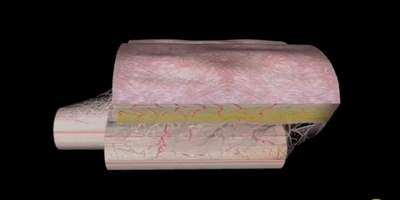
On top of the above movements, nerve flossing for the ulnar, radial and median nerves works surprisingly well once you’ve applied the voodoo band…and this is especially worth considering for athletes who may be dealing with nerve-related symptoms from time to time in their arm (disclaimer – not a doc. I’ve just seen it work).
What To Avoid
Okay, I think we can all agree this post has taken on a life of its own. But before we wrap it up, I can’t help myself but to touch on a couple final factors that could be actively worsening your recovery.
#8: Don’t Use Ice / NSAIDs
This may be controversial, because it flies in the face of conventional wisdom, but acute inflammation is not the enemy. Inflammation begins the healing cascade, signaling your body to send in the troops responsible for repairing the damaged area. In normal circumstances, this isn’t a bad thing.
In fact, rather than constricting blood vessels and reducing blood flow to the recovering area, you should be seeking to increase blood flow to the tissue through active recovery.
What doesn’t make much sense is coaches or athletes who believe in distance “flush” runs but also believe in icing the arm – which work on two opposing mechanisms of action (increasing vs. decreasing blood flow).
Icing and Non Steroidal Anti Inflammatory Drugs (NSAIDs) like Ibuprofen may temporarily relieve pain, but this comes at the cost of slightly delaying recovery.

More problematic than this, however, is that most athletes that use Ibuprofen use it as a crutch to push through pain and soreness. It’s not the miniscule theoretical drop in recovery as much as this – slapping a band-aid on the symptoms and throwing through fatigue, soreness and injury – that predisposes athletes to an increased injury risk.
Most athletes that use Ibuprofen use it as a crutch to push through pain and soreness.
Look, I’m not saying that there is never a place for ice or NSAIDs. Chronic inflammation, severe inflammation following a major injury, or knowingly pounding 6 Advil to get through your league championship game (understanding the risk of injury) may all be valid circumstances.
I’m talking to the habitual icers and pill-poppers who use them for standard pre and post throwing soreness.
You’re likely doing more harm than good.
Finally, let’s look at what Dr. Gabe Mirkin, who coined the term RICE (Rest, Ice, Compression, Elevation), has to say after watching the research evolve over the past several decades:
“When I wrote my best-selling Sportsmedicine Book in 1978, I coined the term RICE (Rest, Ice, Compression, Elevation) for the treatment of athletic injuries. Ice has been a standard treatment for injuries and sore muscles because it helps to relieve pain caused by injured tissue. Coaches have used my “RICE” guideline for decades, but now it appears that both Ice and complete Rest may delay healing, instead of helping.…when muscles and other tissues are damaged, your immunity sends the same inflammatory cells to the damaged tissue to promote healing. The response to both infection and tissue damage is the same. Inflammatory cells rush to injured tissue to start the healing process…The inflammatory cells called macrophages release a hormone called Insulin-like growth Factor (IGF-1) into the damaged tissues, which helps muscles and other injured parts to heal. However, applying ice to reduce swelling actually delays healing by preventing the body from releasing IGF-1.”
#9: Don’t ignore or power through poor recovery with caffeine / stubbornness
This links well with the previous point, in that the goal is not to simply apply band-aids to yourself to get through today, it’s to establish routines and habit that will set you up for consistent progress, recovery and adaptation.
One of the most common band-aids is caffeine consumption.
Not in the sense that caffeine is directly hurting your recovery (although it will, indirectly if you begin to have disturbed sleep), but in the sense of how most athletes use it.
I’ll agree – it’s cool to stay up until 2am, wake up for a 6 am lift and realize that you can still move some weight in the weight room after 2 scoops of pre-workout. It’s tempting for many athletes to ignore their sleep and nutritional habits, given the quick fix that caffeine seems to supply.
But that quick fix is an illusion – and you can’t mask poor recovery habits forever with caffeine.
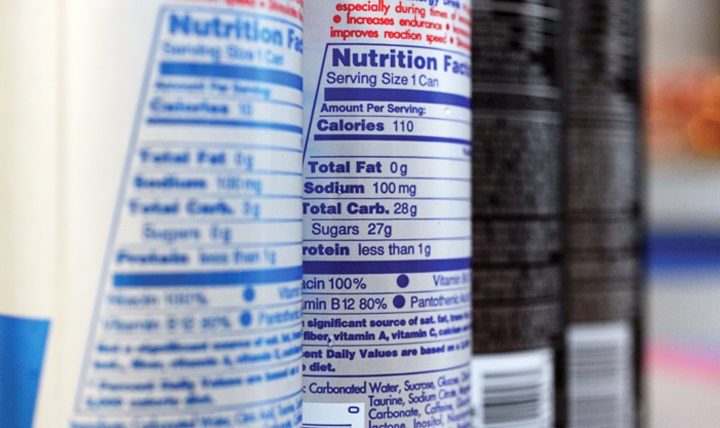
Instead, focus on your sleep and recovery so that you don’t typically need caffeine to get it going in the weight room.
Use it sparingly, rather than excessively, and you’ll be far more in tune with your actual recovery (and stay sensitive to the effects of caffeine when you do use it).
I’ll typically use a scoop of pre-workout a couple times per week (although I don’t need it to have productive training). I stay sensitive to it, and while I’ll occasionally use it to power through a particularly long day, I make sure to not let this become a chronic habit.
But who am I kidding – most of you reading this aren’t going to heed my advice until you learn the hard way.
#10: Avoid excess training / throwing volume
“An ounce of prevention is worth a pound of cure”
Much of the time athletes recover poorly because of what’s right in front of their nose: excess workload.
Do you really need 4 drop sets for your biceps in the weightroom? Or 5 sets of 10 eccentric squats in-season?
Do you really need to do 10 arm care exercises pre and post throwing, even though your scapular muscles and posterior cuff always feel fatigued and overworked?
Do you really need to be throwing 75 or 85% intensity on your light throwing days, or taking 15-20 throws at your max distance on long toss days?
Most of the time, addressing the workload issue is more than half of the solution, because you won’t be able to out-recover an excessive workload, no matter how much sleep or Marc Pro-ing you do.
Closing thoughts
Recovery doesn’t have to be complicated. Make sure your bases are covered on the main variables like sleep, calories, protein intake, active recovery and workload management.
Those in place, try incorporating additional strategies like sauna sessions, Marc Pro and Voodoo flossing, and try ditching the ice, ibuprofen and caffeine when it’s not entirely necessary. Finally, keep an eye on any particularly troublesome areas where stress seems to be accumulating, and look for what in your movement mechanics or mobility may be contributing – getting a movement screen is a good idea if you don’t know where to start.
If you have any questions or are interested in our remote coaching, email us at contact@treadathletics.com.
As always, thanks for reading!
Here’s to reaching your potential,
Ben
Athletes or coaches interested in remote one-on-one or team programming? Reach out via this application form.

